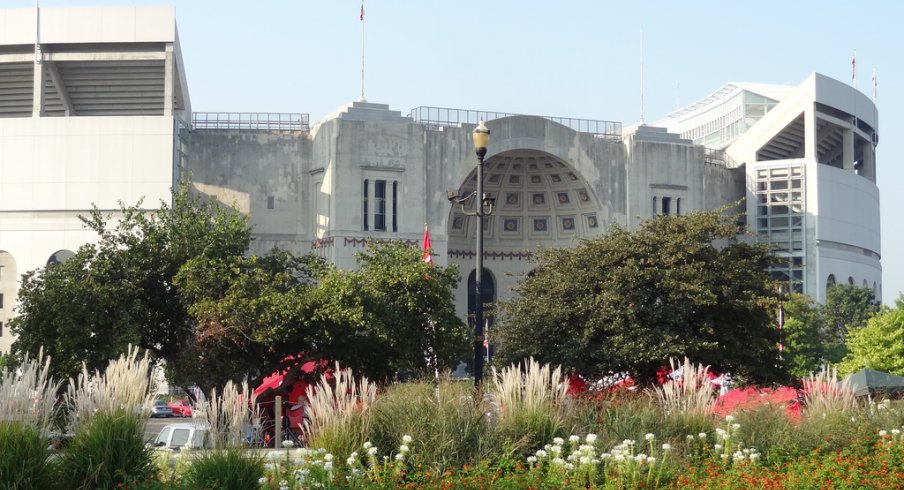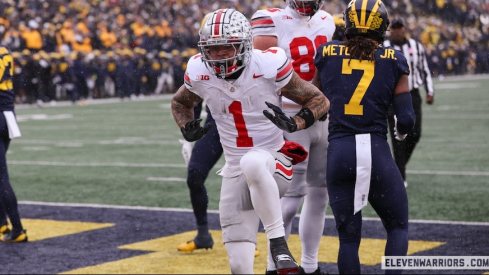In 1929, the Carnegie Foundation released a report called "American College Athletics" that bemoaned the state of college athletics. In it, they decried the way that college sports had begun to infringe on what they saw as the mission of universities ("...its primary function in every country is to serve as an exponent of its highest intellectual life." Wow okay guys, don't overreach or anything), lamented the out sized attention lavished on athletes, and generally pointed out that maybe, just maybe, this whole "collegiate sports" thing isn't a pure expression of physical prowess in between dissections of Boethian philosophy and volunteering at the local Anti-Saloon League.
After reading the portions of the report that are publicly available and doing a little independent research of my own, I decided that the best way to see the relevance of the Foundation's 1929 report to college sports in the year 2016 would be to present you with some scenarios and see if you can determine if they are the result of hand-wringing by Ivy League intellectuals during the Hoover administration or by the likes of @NDFanBoi1971 last week on Twitter.
"THEY'RE PAYING THESE KIDS TO PLAY A GAME. A GAME!!!"
Surprise! This was just as big a deal in the 1920s as it is in the era of Cam Netwon as it was in the era of the Lindy Hop. In the Carnegie Foundation's report, they make a specific reference to a pay-for-play scandal that rocked Iowa football in the 1920s, as it was discovered that players were being cut checks from a slush fund to the tune of almost $1400 a month in 2016 dollars. Northwestern and Purdue were also implied to be running their own schemes, but the truth of the matter was that virtually every major college was doing some variation of this. The Carnegie Foundation's report makes special note of players just walking off with equipment whenever they felt like it, which I feel like as Ohio State fans we might have some acquaintanceship with.
"GOT DANG IT PAWL, THESE KIDS AIN'T IN THE NFL YET, THEY'RE AMATEURS!"
I don't even know what the hell an "amateur" is anymore. My only real understanding of the phrase comes from some hazy misunderstanding of the themes in The Mighty Ducks 2, but really, when a college student is the very public face of a business that makes 120 million dollars in revenue a year and yet is denied the right to profit off their own face (or using their own property), it suddenly becomes hard to draw the line between "amateur" and "willing accomplice." The Carnegie Foundation tried to give me a definition, however, and the reasoning behind the college athlete as amateur:
Now, amateurism, as Professor Hetherington pointed out twenty years ago, "aims to conserve the natural rights of the many as against the privileges of the few." Thus, the convention of amateurism represents a guarantee on the part of the American college that every undergraduate shall have his fair and equal chance to develop his physical powers for the honor of his fellows, his own self-satisfaction, and the good of the nation.
The report goes on to say that college sports, being physical in nature, are almost always inherently violent, and should then be governed by a societal amateurism to ensure things like fair play and opportunity for college-aged people. A student in a Glee Club (to use their example), wouldn't be bound by amateurism because making some cash on the side singing at a concert isn't at risk of becoming a societal ill since singing or acting or debating is an intrinsically "wholesome" activity.
Not sure how the 1929 Carnegie Foundation would react to the 7th Floor Crew but whatever.
"THE SALARIES FOR COACHES ARE GETTING OUT OF HAND!"
One of the more astonishing things that the Carnegie Foundation uncovered was that among the 58 colleges that they surveyed, on average the head coach made almost 8% more than the average professor. Eight percent! That'd be like if your average horticulture professor at Ohio State was making a mere 5.392 million dollars to Urban Meyer's 5.860 million dollars a year. I mean, hell, I'm a high school teacher and I don't even get out of bed for less than seven million. Can you imagine how devalued teaching and education would be if these trends were allowed to continue and football coaches made, 10, 20, or even up to 50 percent more than the educators at the school that employs them both? It'd be complete chaos!
"THESE COLLEGE KIDS ARE GETTING A LITTLE BIG FOR THEIR BRITCHES, DON'T YOU THINK?"
All my life I have struggled against my desire for my favorite college teams to be populated by "good guys." Obviously I want all of them to be law-abiding, but more specifically I've always wanted the players I root for to be nice, down to earth gentlemen who ignore the all consuming desire to feed their gargantuan egos built by a lifetime of being better than everyone else around them at a sport.
In short, it's really silly to expect a team of dozens of people to not have a turd here and there, but that doesn't stop the Carnegie Foundation from citing a Harvard publication in the late 1800s, saying:
...it seems unnecessary to point out the harm done by the cheap notoriety given our football players in the newspapers... The consequence is, the first few weeks which ought to be spent developing him into a player are spent in reducing what is the natural result of his publicity, a 'swelled head."
Holy crap, did they just indict the entire sports journalism industry? Maybe... maybe I need to re-examine my life here. Maybe there's more to life than breathlessly recounting the everyday foibles of college athletes.
Of course on the other hand, some of them do stuff like this. So no dice.
College athletics has been beset by scandal and criticism since its inception many generations ago. People saw an opportunity to turn their popularity into financial gain almost immediately, and as a result we're still talking about basically the same topics and controversies that were covered in a nationally respected journal in 1929, almost 90 years later.
My argument is that some of these things are simply intrinsic to college sports in general. The amount of worrying and griping that we do about violations and the attitudes of athletes is way more loud and frequent than those types of problems really deserve, especially when the health of the player in sports like football is a much more immediate and important topic. Paying players, jerk kids, blurring the line amateurism and professional... all of that stuff is a constant hum in the background of collegiate athletics. It's annoying, but I'm not sure that they're particularly worth freaking out about, and I'm not sure I have the solutions for them anyway.
Although, Henry Pritchett, head of the Carnegie Foundation near the time that their report was released, just might have it figured out.
There is another method which does not impose so severe a test of academic virtue, but which may accomplish much. That is, to substitute some other sport for football that will bring just as much revenue into the college chest while not exacting the tell in young lives and lowered college ideals for which football is now, in large measure, responsible.
...
Instead of a football fight with its enormous draft on the energies of its devotees and its tell of young life, let us introduce in the colleges the humane and noble sport of horse racing!
Ahhh, dammit! It was right in front of us this whole time! I wonder what American Pharoah's stud fees are?


